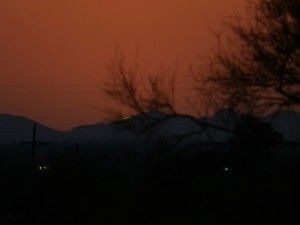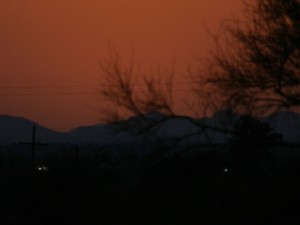I got a polarizing filter for my camera several months ago. This being Tucson, it took a long time before I finally got a rainbow to try it out on. So here are three pictures I snapped on Wednesday night.
The first picture is unfiltered.
The second one is with the the polarizing filter rotated to enhance the rainbow as much as possible.
The third picture has the filter rotated 90 degrees from the second which totally blocks the rainbow.
There is another interesting effect going on here. Notice there are rays some light rays that appear to be going through the rainbow. Also notice that the rainbow is not continuous, this one is broken due to the pattern of rain. In a normal rainbow, the area inside the rainbow is brightened and outside the rainbow is darker (actually, the darker area is between the primary and secondary rainbow...in this case, the secondary rainbow was too dark to see. This dark area between the rainbows is called Alexander's Band). So where you have a bright part of this rainbow, you get a bright band beneath it. Where there is no rainbow, you get a dark area beneath it, hence the rays.
I'll keep looking for more rainbows in those later afternoon thunderstorms as our rainy season picks up and try to get some more pics that show Alexander's Band and other phenomena.Reprinted with permission from the Half-Astrophysicist Blog.




























































